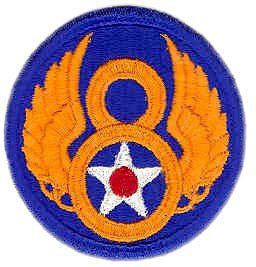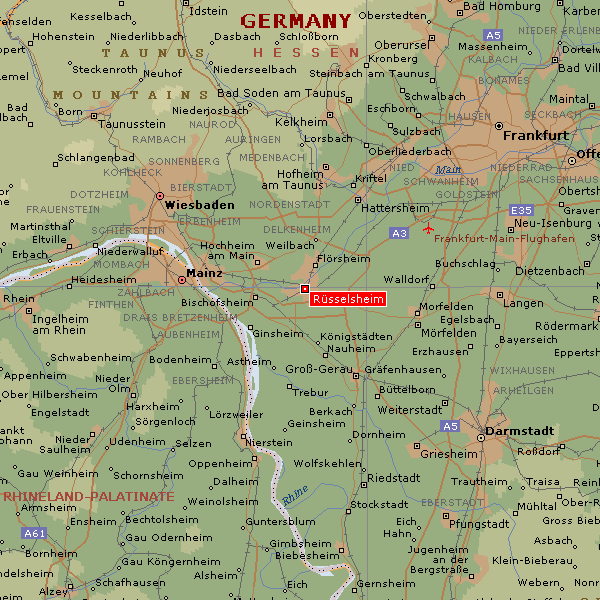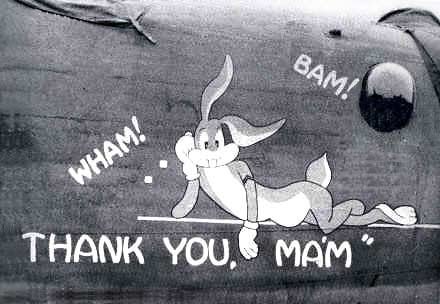
 |
The Opel plant during World War II was producing aircraft parts, making it a prime target for the thousands of Allied bombers hitting industrial complexes on a daily basis. The British Royal Air Force on Aug. 26, 1944, launched a massive air raid against the Opel factory. Much of the city was destroyed, and hundreds of it's citizens killed. This raid created a growing hatred of the daily death from the sky. The weary townspeople wanted revenge.
The crew consisted of:
- Pilot- 2nd Lt. Norman J. Rogers Jr.
- Co-Pilot- 2nd Lt. John N. Sekul
- Radio Operator- S/Sgt. Thomas D. Williams
- Belly/Gun- Sgt. William A. Dumont
- Left/Waist Gun- Sgt. Elmore L. Austin
- Nose/Gun- Sgt. William M. Adams
- Tail/Gun- Sgt. Sidney E. Brown
- Flt. Eng.- S/Sgt. Forest W. Brininstool
- Nav. Bombardier- Flight Officer Haigus Tufenkjia
 Nose art of the B-24 Wham Bam shot down over Germany. AF Museum Archives. |
The Wham! Bam! At that time was part of the largest formation of aircraft ever to leave England: 485 B-24s, 834 B-17s, and 739 fighters. Approaching the target they ran into heavy anti-aircraft fire. Just after releasing their bombs right on target the plane took several burst of flak. One direct hit in the bomb bay area knocked out the hydraulic system, one engine, and damaged two other engines. The Wham! Bam! was mortally wounded. The bail out order was given. The crew landed in a farm area. Brininstool had suffered a shrapnel wound in the stomach, and was very fortunate when a farm couple took him in and cleaned his wound. The rest of the crew was rounded up by Luftwaffe personnel and placed in a cell in the town hall. Dumont and Rogers suffered ankle injuries. The entire crew was taken by train to an unidentified German Air Force base near Munster. Brininstool was taken to a clinic where a Doctor operated on his stomach wound, then placed in a hospital in Munster for further treatment. He was then taken by guards to a POW interrogation center near Frankfurt. The remaining eight crewmembers while on a 12 hour train ride ran into a bombed out section of track near Russelsheim and were forced to detrain. The guards began escorting the airmen toward Russelsheim expecting to catch another train beyond the damaged track area.
The town of Russelsheim on Aug. 26 had been subjected to a massive attack by the British RAF which dropped 2000 pound bombs, many hitting the Opel plant, and thousands of incendiary bombs that fell in the Historic section of the city doing immense damage. Air crews reported the fires visible from 100 miles away. The Opel plant was reduced to rubble. Such raids had cost the city of Russelsheim the destruction of half it's housing. So the eight B-24 airmen were headed for Russelsheim, still burning, with the smell of death and destruction everywhere, leaving the townspeople agonizing over their losses.